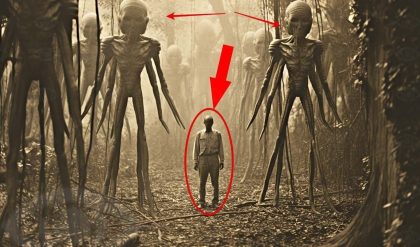The Sahara Desert, known for its immense stretches of sand dunes and harsh climate, holds many secrets beneath its arid surface. Recent discoveries have unveiled a fascinating array of hidden treasures and historical wonders that challenge our understanding of this vast region.
1. Ancient Rivers and Lakes
Beneath the Sahara’s scorching sands, scientists have discovered ancient riverbeds and lake basins. These findings indicate that the desert was once a lush, green landscape with flowing rivers and large lakes. Advanced satellite imaging and ground-penetrating radar have revealed the paths of these ancient waterways, which supported diverse ecosystems and human settlements thousands of years ago.

2. Lost Civilizations
Archaeologists have unearthed remnants of sophisticated ancient civilizations buried under the desert. Among the most remarkable discoveries are the ruins of a once-thriving city, complete with streets, buildings, and irrigation systems. Artifacts such as pottery, tools, and inscriptions found at these sites suggest a high level of technological advancement and extensive trade networks that connected these civilizations to the wider ancient world.
3. Fossils of Ancient Life
The Sahara is a significant site for paleontological research, with numerous fossils discovered beneath its sands. These include remains of prehistoric animals such as dinosaurs and early mammals, offering valuable insights into the region’s ancient biodiversity. These fossils help scientists piece together the evolutionary history of life on Earth and understand the environmental conditions that once prevailed in the Sahara.

4. Subterranean Aquifers
Hidden beneath the desert are vast reserves of fresh water stored in subterranean aquifers. These underground lakes, formed over millennia, are crucial for sustaining life in the arid region. The Nubian Sandstone Aquifer System, one of the largest in the world, holds significant amounts of groundwater, providing a vital resource for the sparse populations living in the Sahara.
5. Ancient Rock Art
The Sahara is rich in ancient rock art, created by early inhabitants who lived in the region when it was more hospitable. These artworks, found in locations like the Tassili n’Ajjer and the Tadrart Acacus, depict scenes of daily life, wildlife, and spiritual rituals. Some of these paintings and carvings date back over 10,000 years, offering a glimpse into the culture and beliefs of prehistoric peoples.
6. The Rich Cultural Heritage
The Sahara has been a cultural crossroads for thousands of years. The desert played a crucial role in the Trans-Saharan trade routes, which facilitated the exchange of goods, ideas, and cultures between West Africa, the Mediterranean, and the Middle East. These routes helped shape the development of societies across Africa, influencing their economies, languages, and traditions.
7. Meteorite Impact Craters
The Sahara is home to several meteorite impact craters, evidence of cosmic events that have shaped the Earth’s surface. These craters provide valuable information about the history of our planet and the forces that have influenced its geological development. Studying these craters helps scientists understand the frequency and impact of meteorite collisions on Earth.

8. The Libyan Desert Glass
One of the Sahara’s most intriguing natural treasures is the Libyan Desert Glass, a yellow-green glass formed by the intense heat of a meteorite impact around 29 million years ago. This unique glass has been used by ancient Egyptians in jewelry and artifacts, including items found in King Tutankhamun’s tomb. Its formation and properties continue to fascinate scientists and historians alike.
The Sahara Desert, far from being just an endless sea of sand, is a repository of natural and cultural history. Each discovery beneath its surface adds a new chapter to the story of our planet and its inhabitants, revealing a landscape that has undergone dramatic transformations and supported diverse forms of life over millions of years.





